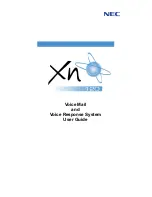
MERLIN LEGEND Communications System Release 5.0
Feature Reference
555-650-110
Issue 1
June 1997
Features
Page 182
CTI (Computer Telephony Integration) Link
Group Calling
When an extension is programmed as a CTI link, the extension is
removed from membership in calling groups.
To ensure that calling group overflow calls initiate screen pop at
destination extensions, set all personal lines at calling group overflow
receivers to No Ring. For example, if a unmonitored DLC overflow
receiver has only a personal line—set to Immediate Ring—available for a
calling group overflow call, the call arrives on the personal line button.
Therefore, caller information is not sent to the destination extension when
the DLC operator transfers the call.
Hold
A CTI link application can put an SA button call on hold.
Pools
When an extension is programmed as a CTI link, dial access to pools is
removed from the extension.
Personal Lines
If an unmonitored DLC transfers a call that arrived on a personal line, the
screen-pop caller information is sent to the destination extension,
providing that the destination extension is using a CTI application.
System Access/
Intercom Buttons
CTI allows software applications on a worktop application to control
placing a call on hold, retrieving a call from hold, inside transfer and
3-party conference, answering, and hanging up on the SA buttons of an
extension using the application.
System
Renumbering
When the dial plan changes, the applications must use the new extension
number in any request. The Passageway Telephony Services security
database should be updated with the dial plan changes so that
permissions are set for the new extension numbers and cleared for the
old extension numbers. Some settings in the CTI software applications
may need to be updated as well.
Transfer
CTI link applications can control inside transfers, not transfers to outside
numbers. When a CTI application is used to initiate a transfer, caller
information is passed to a screen-pop-capable destination.
When a transfer is initiated manually, using the telephone at an extension
where a CTI application is installed, screen pop is not initiated at a
screen-pop capable destination, even if the CTI application is used to
complete the transfer.
A transfer by a QCC or unmonitored DLC operator generates screen pop
of inside or outside caller information at screen-pop-capable destinations.
















































